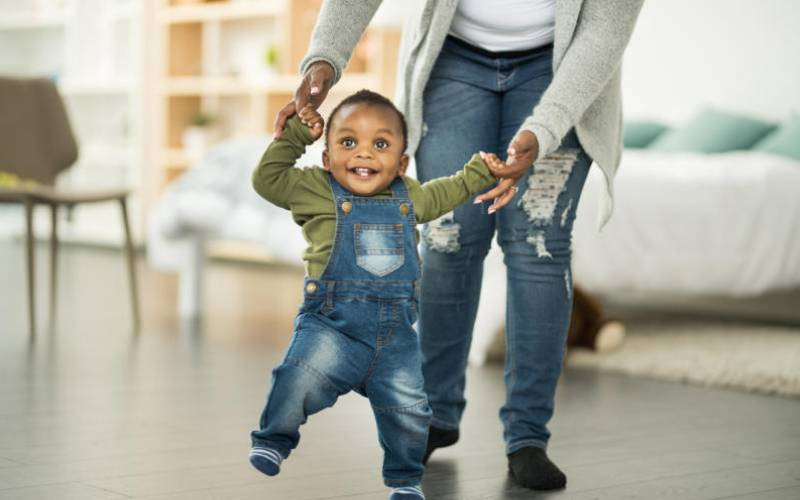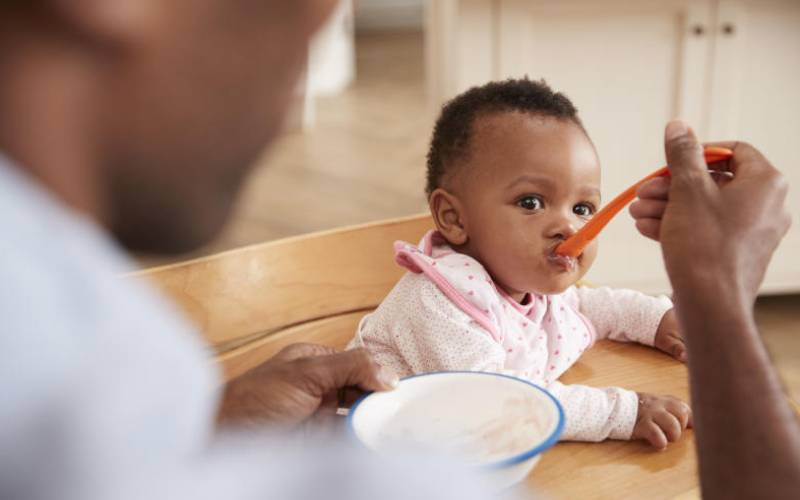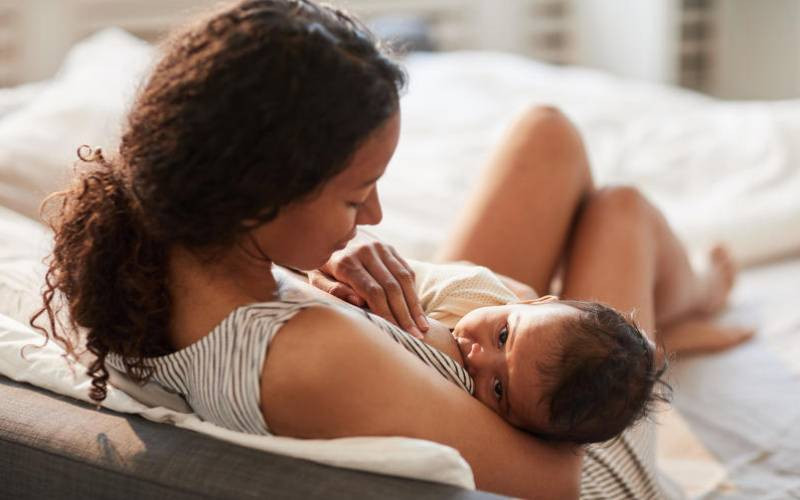
You have an adorable baby whose needs you want to meet more than your own. There’s only one sticking point. She can’t always tell you what she wants.
She might have a limited repertoire, but she’s always trying to communicate with you. It’s about picking up on the small details and learning what her different signals mean. These signs are her secret language, or baby code. Here is how to decipher what she is trying to tell you.
1. Bonding eyes
Your newborn will look her eyes onto yours around the one or two-month mark, as her focus becomes clearer. This contact is the ultimate bonding move and her way of saying, ‘I love you.’ She is also looking to you for reassurance, especially when she’s startled.
How to reply: Encourage, make eye contact and talk to her. If your baby’s looking to you for reassurance after a noise or sudden movement, as well as holding her gaze, a good soothing trick is to place your hand quite firmly on her tummy to make her feel secure.
2. Excited gurgle
This is her way of saying, “Look at me!” or “I like this!” It depends on what’s happening around her at the time, but it could be she’s enjoying playing with a toy, is after something that’s caught her eye or just wants you to know she’s there. Gurgling is a real positive, happy way of talking to you.
How to reply: Mirror her upbeat. Say ‘Hello!” “Do you like that?” or “Do you like this?” while offering her the toy or object she seems to be looking at. Asking her a question shows her a give-and-take way of conversing that forms the basis of her communication development.
3. Hungry tongue
Is your baby sticking out her tongue and moving it from side to side? This indicates she’s searching for something, perhaps a cuddle or object to play with. And if the tongue’s sitting on the middle of her bottom lip and poking in and out, she’s telling you she’s hungry.
Your baby’s most sensitive nerve endings are in her mouth and she’ll move it a lot when she wants feeding. She’ll also turn towards you if you stoke her cheek because she thinks there’s food nearby.
How to reply: Offer her different things to find out what she’s searching for, or feed her if it’s the right time. If she’s hungry, but you can’t feed her immediately, distracting with a toy may help give you’re a bit more time.
4. Frustrated fist
Your baby can clench her first intentionally from around four or five months, and often indicates she’s overwhelmed or over-stimulated. So, in the nicest possible way, she’s telling you to back off. She’s probably tired, frustrated or feeling a bit crowded and is asking for space.
You may also see her kicking her legs, grimacing or turning her face away. She’s feeling her emotions physically and reacting like how we wish we could when we need a break.
How to reply: Stop playing for 10 minutes so she can calm down, then tone down the intensity of what you’re doing by moving a little further away and making your movements and gestures slower. Always use a soothing voice to reassure, and say, “Is that a bit too much?”-she’ll understand your tone, if not the words.
5. Generous cry
Your newborn does this for various reasons, ranging from hunger to tiredness. When she reaches between six and eight months, however, a certain cry when you disappear from her sight indicates separation anxiety. This is quite a distressed cry, often accompanied by pleading eyes and lifting her arms up to you.
How to reply: Soothe your baby, but also show her there’s nothing to worry about. Start by leaving the room for a few minutes while she’s with someone else, then return, gradually increasing the number of minutes over time. This helps her realize you’ll always come back and you still exist, even when she can’t see you.
6. Clever clap
From around eight months, your child will manage to clap her hands. She’s showing off that she can control her actions in this way and proudly saying to you, “Look what I can do!” the surprise and excitement means she’ll probably do it more than once.
How to reply: Mirror her joy back by clapping. Make eye contact, smile and take it in turns to clap. Again, it’s that give-and-take idea that’s so important for her communication skills. This is also a good time to start showing your baby other ‘excited’ gestures, which she can learn to mimic, such as raising your arms in joy.
 The Standard Group Plc is a multi-media organization with investments in media platforms spanning newspaper print
operations, television, radio broadcasting, digital and online services. The Standard Group is recognized as a
leading multi-media house in Kenya with a key influence in matters of national and international interest.
The Standard Group Plc is a multi-media organization with investments in media platforms spanning newspaper print
operations, television, radio broadcasting, digital and online services. The Standard Group is recognized as a
leading multi-media house in Kenya with a key influence in matters of national and international interest.




